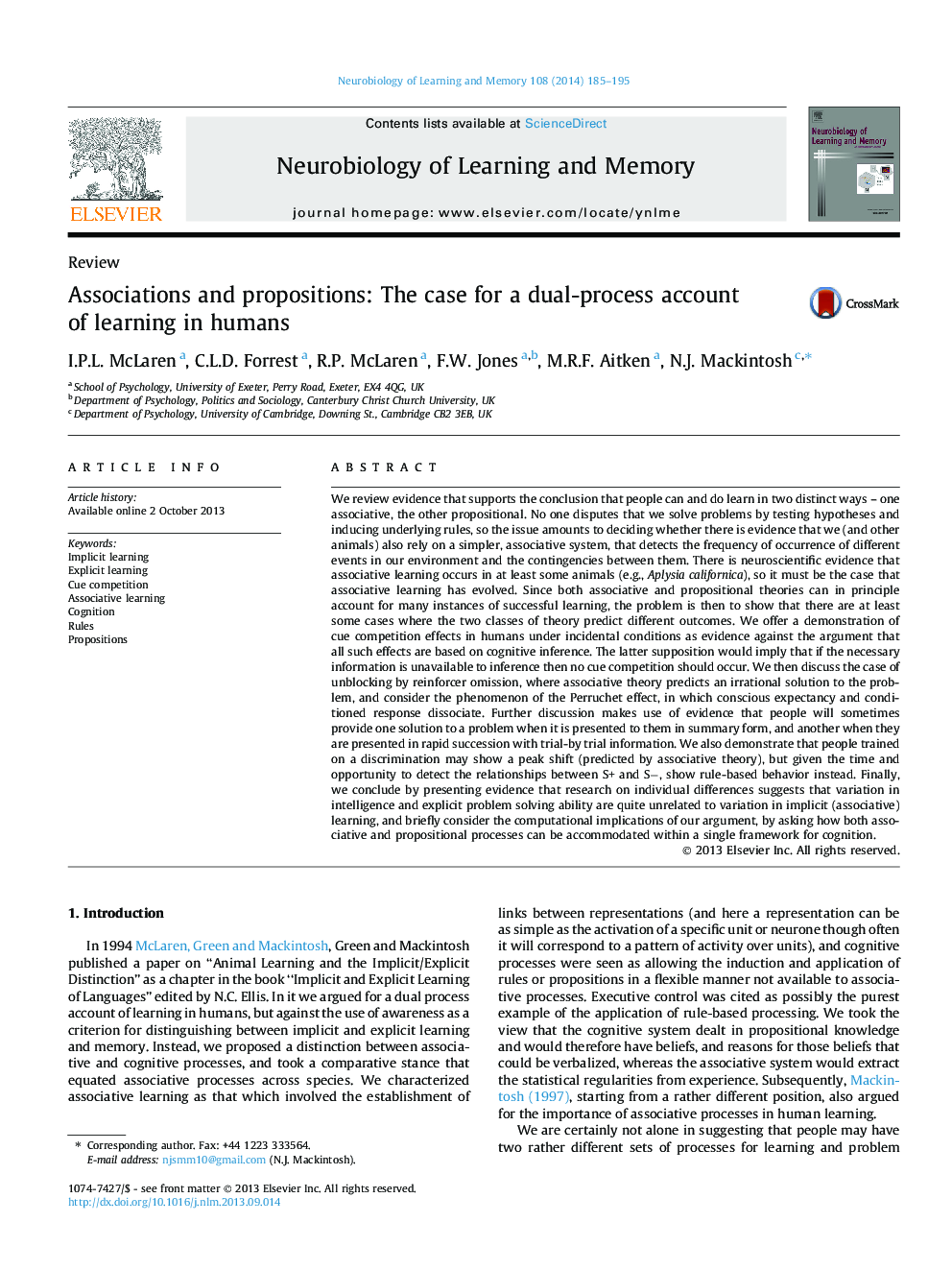| کد مقاله | کد نشریه | سال انتشار | مقاله انگلیسی | نسخه تمام متن |
|---|---|---|---|---|
| 936573 | 1475167 | 2014 | 11 صفحه PDF | دانلود رایگان |
We review evidence that supports the conclusion that people can and do learn in two distinct ways – one associative, the other propositional. No one disputes that we solve problems by testing hypotheses and inducing underlying rules, so the issue amounts to deciding whether there is evidence that we (and other animals) also rely on a simpler, associative system, that detects the frequency of occurrence of different events in our environment and the contingencies between them. There is neuroscientific evidence that associative learning occurs in at least some animals (e.g., Aplysia californica), so it must be the case that associative learning has evolved. Since both associative and propositional theories can in principle account for many instances of successful learning, the problem is then to show that there are at least some cases where the two classes of theory predict different outcomes. We offer a demonstration of cue competition effects in humans under incidental conditions as evidence against the argument that all such effects are based on cognitive inference. The latter supposition would imply that if the necessary information is unavailable to inference then no cue competition should occur. We then discuss the case of unblocking by reinforcer omission, where associative theory predicts an irrational solution to the problem, and consider the phenomenon of the Perruchet effect, in which conscious expectancy and conditioned response dissociate. Further discussion makes use of evidence that people will sometimes provide one solution to a problem when it is presented to them in summary form, and another when they are presented in rapid succession with trial-by trial information. We also demonstrate that people trained on a discrimination may show a peak shift (predicted by associative theory), but given the time and opportunity to detect the relationships between S+ and S−, show rule-based behavior instead. Finally, we conclude by presenting evidence that research on individual differences suggests that variation in intelligence and explicit problem solving ability are quite unrelated to variation in implicit (associative) learning, and briefly consider the computational implications of our argument, by asking how both associative and propositional processes can be accommodated within a single framework for cognition.
Journal: Neurobiology of Learning and Memory - Volume 108, February 2014, Pages 185–195
